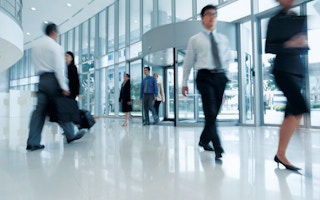The recent bout of haze has shone the spotlight on Singapore’s air quality. People are avoiding the haze by seeking refuge indoors as they expect indoor air quality to be clean. Indoor air quality is just as, if not more, important than outdoor air quality. With a big urban population, the majority of Singaporeans are white-collared workers who spend the bulk of their time indoors.
Poor air quality in offices or houses caused by volatile organic compounds (VOCs) in the air, dust and lack of ventilation has led to the rise of the “sick building syndrome”. This syndrome causes occupants to suffer from frequent coughing, sneezing, nausea, headache, fatigue and irritation, with no otherwise determinable cause. As expected, this adversely affects the productivity of workers.
With city populations increasing globally and with more and more buildings being built to meet the growing demand, building technologies that help create mini climate-controlled environments in offices, manufacturing facilities, clean rooms and residential areas are needed to improve comfort, efficiency, safety and to create the best possible work and life surroundings.
What is expected of the building?
Like people, different buildings have different jobs to do. The actual climatic conditions required will depend on the building size, life cycle, operating times and comfort needs. Each room within a building also has its unique requirements. In order to create the characteristics of a certain environment, it is important to take note of four key elements – temperature, humidity, ventilation and carbon dioxide (CO2) levels.
For example, server rooms need to be kept cool to prevent the overheating of servers and systems to ensure equipment reliability and longevity, which in turn, maximise uptime and security. However, the heat emitted from servers may vary based on usage. Therefore, the surrounding environment has to be able to adapt to these changes.
In a small meeting room with around 10 people and insufficient airflow, the CO2 levels will be too high and the people in the room will feel suffocated and this adversely affects productivity. It is important for meeting rooms and other enclosed areas within the building to receive the proper amount of airflow to ensure CO2 levels are kept below required levels.
To manage surrounding climatic conditions accurately, it is crucial to monitor and control the climate of the space within its precise limits and within an allowable envelope.
Companies need to harness technology that automatically senses room temperature, humidity levels, lighting and power utilised through hand-held or wall-mounted transmitters. These transmitters allow multi-functional room control units to be hooked up to building automation systems. With the information gathered, companies can program systems to respond effectively to the dips and rises in a controlled space.
Controlled comfort
Increasing demands for comfort, safety and efficiency require ever-more stringent installation concepts that combine intelligent, multi-utility control of all technical components. The basic elements of climate control systems are heating, ventilation and air conditioning (HVAC). Heating and refrigeration controllers, room thermostats, valves and actuators, and meters are items required to control the internal environment.
Automatic scheduling, using customised scenarios, allows HVAC components to be switched on or off any time within the day at real-time status. This flexibility eliminates the need to deploy manpower to manually control the components, thus minimising the incidence of human error.
Having an intelligent, consolidated and integrated building automation system means that building operators have the ability to automatically optimise room and building environments for a variety of situations. Various wireless systems with infrared and radio technology can be integrated into the installation, via gateways, in order to facilitate smooth operation of room functions. This allows a flexible installation of operating elements and sensor systems – without cables. In this way, usage changes can be implemented quickly and easily. As a result, there are savings on energy and other operating costs, as well as time, which leads to a safer building which is more comfortable and reliable for its inhabitants, creating a conducive work environment and promoting productivity.
Advances in infrastructure technology have made what was once only imaginable now affordable and feasible. The cause and effect of automation and integration keeps raising the bar on efficiency and flexibility.
While maintaining and simulating internal climatic conditions in buildings is crucial, it is also important for companies to ensure that this is carried out sustainably, maintaining our natural environment. Through integrated monitoring and control systems, buildings are also able to bring down energy usage and, thereby natural energy sources – aiding the sustainability of our natural environment.
Sustaining our environment
Recent years have seen a drive by Singapore’s Building and Construction Authority (BCA) and National Environment Agency (NEA) to encourage the design and construction of energy efficient buildings. Energy efficient buildings often enjoy significant cost savings because energy cost is typically the biggest component of the total operating cost of a building.
The ability to control the climatic conditions of a building in order to meet its functional requirements, while optimising its use of energy, can bring both economic and environmental benefits to building owners, managers and its inhabitants. The right building technologies can address the challenges brought about by growing urbanisation, creating safe and conducive working and living environments to optimize the productivity of companies, buildings and the people in them well into the future.
Peter Halliday is the head of the Building Technologies Division of Siemens ASEAN.

















